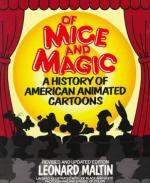
|
| Name: _________________________ | Period: ___________________ |
This test consists of 15 multiple choice questions and 5 short answer questions.
Multiple Choice Questions
1. Which of the following was a production that took a great deal of research for Fleischer?
(a) Moving Picture World.
(b) Stalling the New World.
(c) Creative Crazy World.
(d) Strange New World.
2. What did Dave Fleischer annoy workers with?
(a) His desire for gags.
(b) His desire to create musicals.
(c) His desire to create voluptuous female characters.
(d) His desire to create only animal-like characters.
3. Which of the following is described as being Disney's most unusual and dynamic success?
(a) Snow White and the Seven Dwarves.
(b) Cinderella.
(c) Fantasia.
(d) The Lion King.
4. What was Disney's first animated feature?
(a) Newman's Laugh-O-Grams.
(b) Fantasia.
(c) Steamboat Willie.
(d) Snow White and the Seven Dwarves.
5. Who was the founder of Paramount Studios?
(a) Alex Zuport.
(b) Allan Zane.
(c) Adolph Zukor.
(d) Alexander Zorkins.
6. What was Bray fascinated by?
(a) Writing.
(b) Child psychology.
(c) Comic books.
(d) Animation.
7. Where was Emile Cohl from?
(a) Russia.
(b) America.
(c) United Kingdom.
(d) France.
8. According to those that did not believe that animation was real, what was McCay using to trick the audience?
(a) Actual animals.
(b) Ropes.
(c) Films.
(d) Wires.
9. How long did Red Seal last?
(a) 20 years.
(b) 1 year.
(c) 7 years.
(d) 2 years.
10. What was Fleischer's most popular and long-lasting invention?
(a) Rotoscope.
(b) Bouncing ball.
(c) Digital camera.
(d) Projector.
11. When was Disney's last film released?
(a) The day that he died.
(b) A year before his death.
(c) A year after his death.
(d) A month before his death.
12. Which of the following did Disney have trouble managing?
(a) Distribution.
(b) Artwork.
(c) Employees.
(d) Money.
13. Which of the following did McCay specifically say he did not want to be a part of?
(a) Animation.
(b) Production.
(c) Film industry.
(d) Distribution.
14. Which of the following is not an early Disney feature?
(a) Fantasia.
(b) The Lion King.
(c) The Jungle Book.
(d) Snow White and the Seven Dwarves.
15. In the early days of animation, how many frames per second were required for an animated piece?
(a) 24.
(b) 20.
(c) 14.
(d) 16.
Short Answer Questions
1. Which of the following films did Disney actually work on?
2. When did Fleischer start his own company?
3. In which century was animation invented?
4. Who was Fleischer's biggest competition?
5. What was the name of the feature Fleischer worked on with the American Museum of Natural History?
|
This section contains 353 words (approx. 2 pages at 300 words per page) |

|




